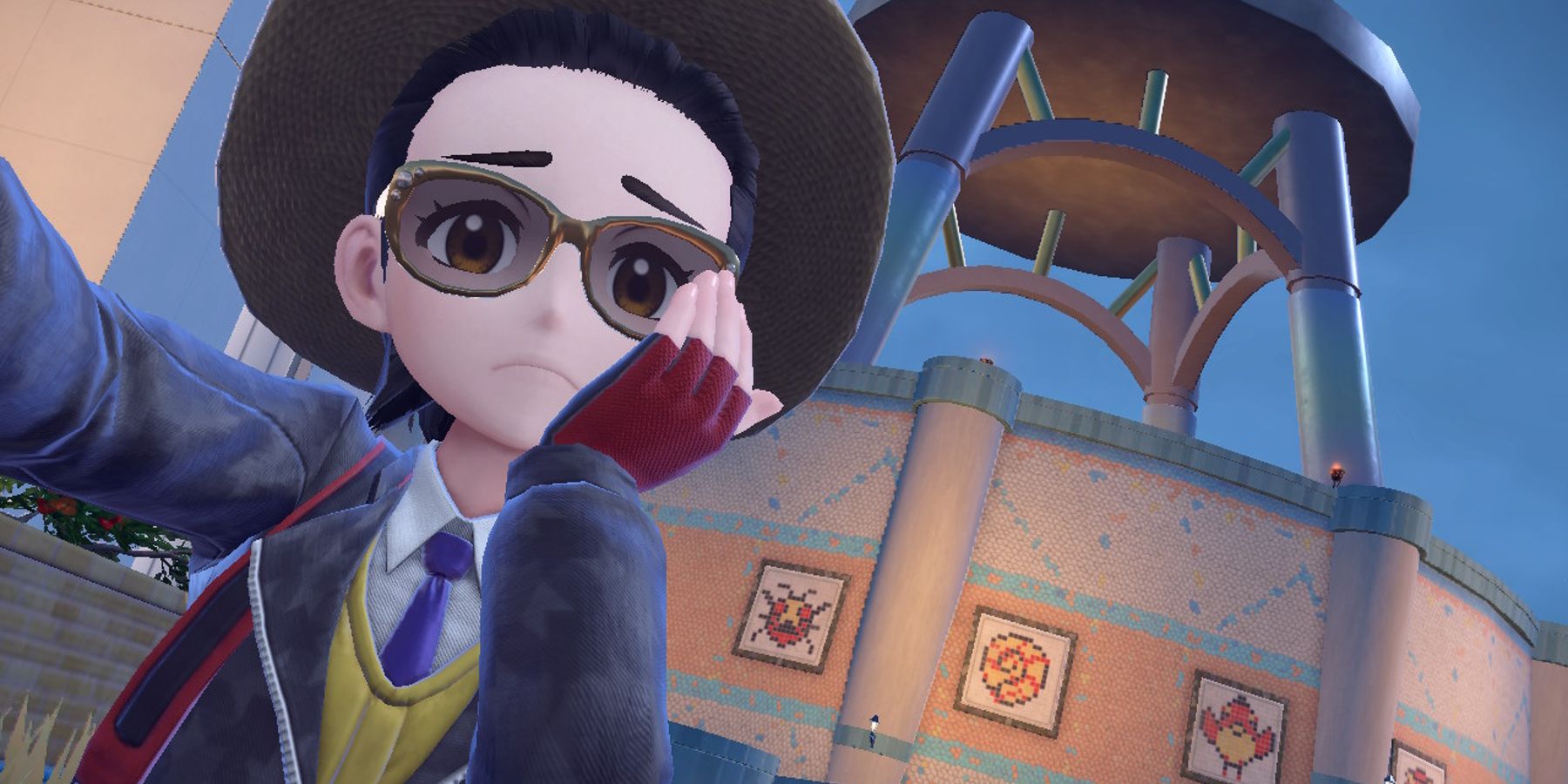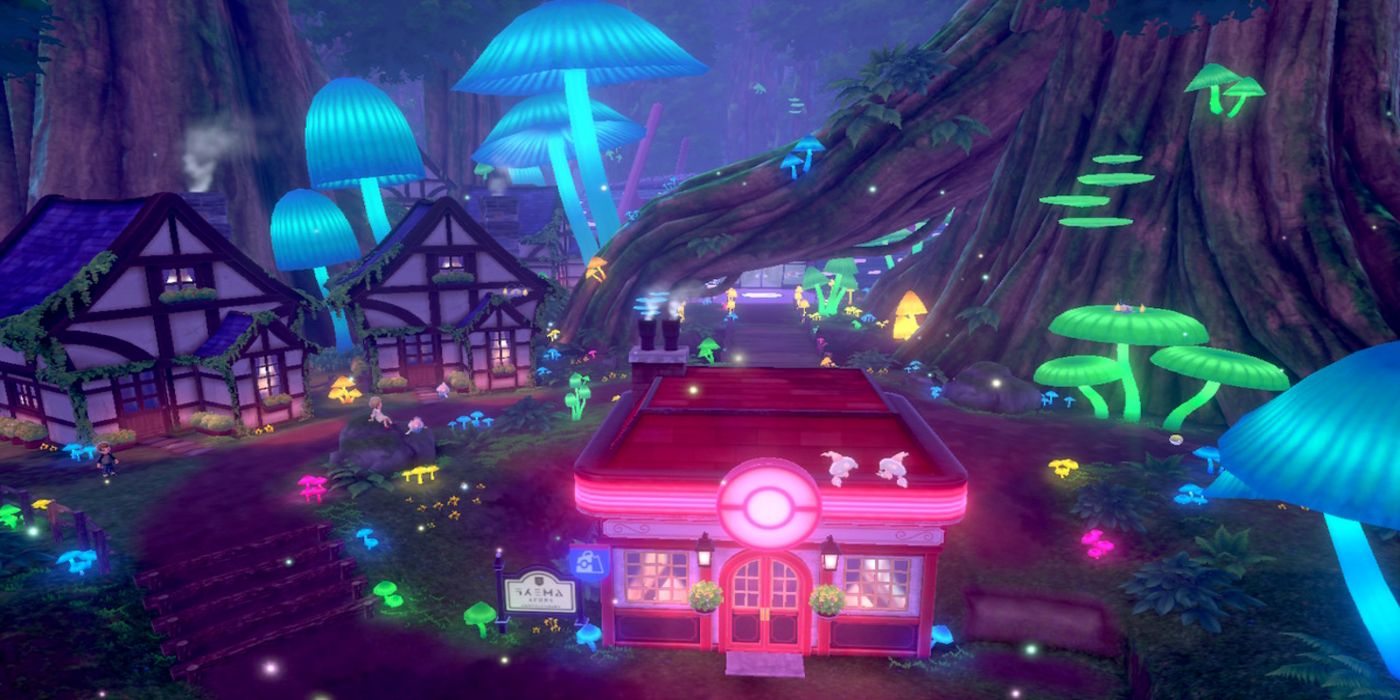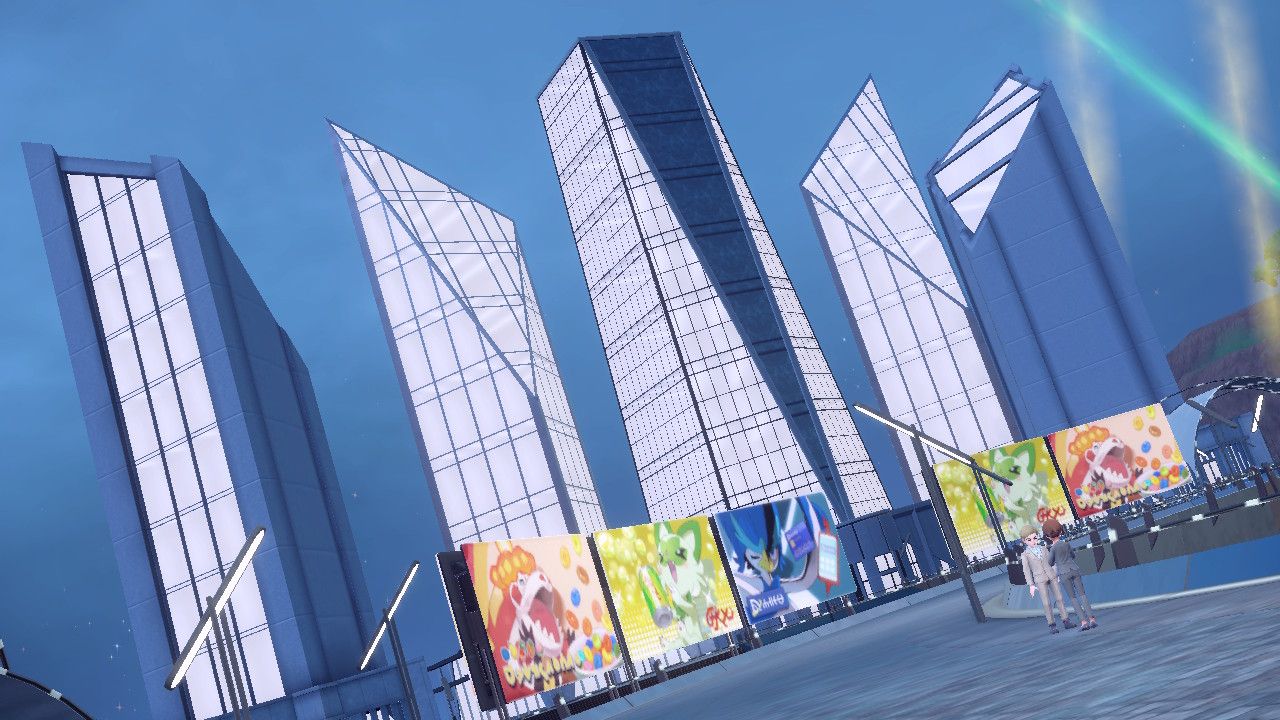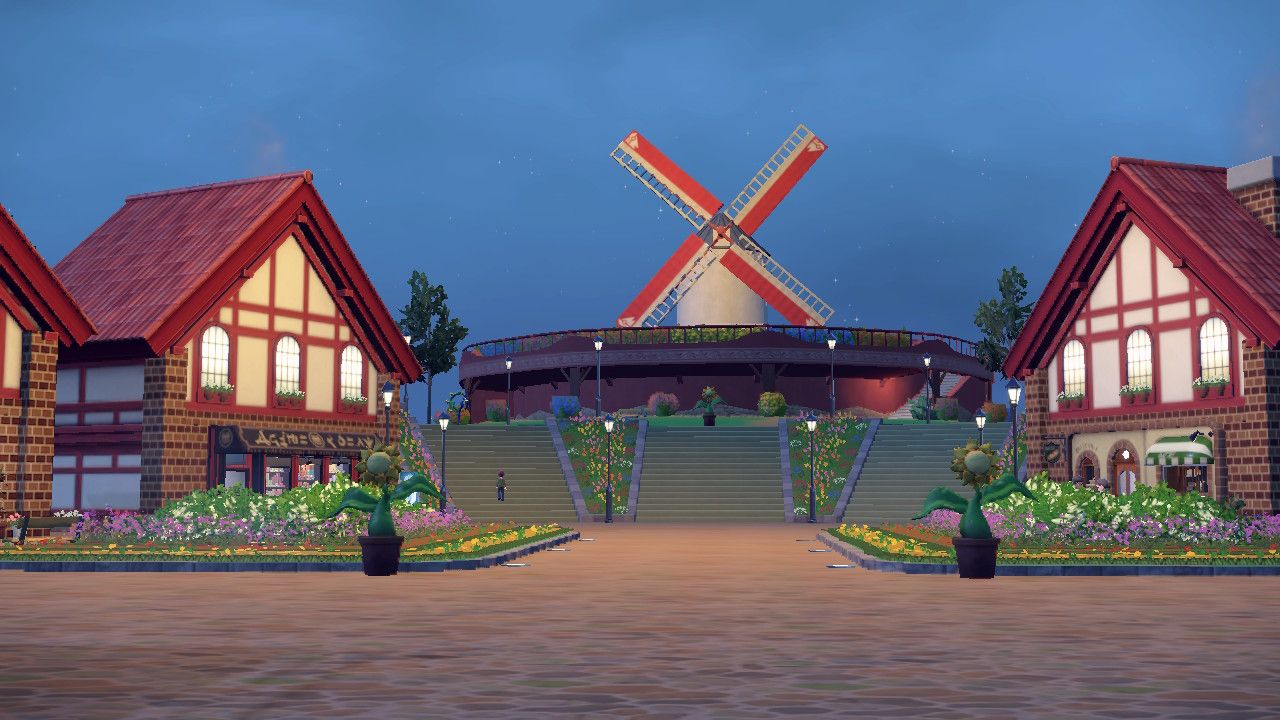Pokemon Scarlet and Violet were heavily criticized at launch for their poor technical state, but landed on many Game of the Year lists by virtue of Paldea's design, the strength of its new monsters, and tweaks to Game Freak's established mechanics. The franchise has slowly worked its way toward open-world design through Sword and Shield's Wild Areas and Legends: Arceus' segmented Hisui, but the headlining region in Pokemon Scarlet and Violet encourages exploration well and points to major improvements that fans can expect in subsequent entries. One area that should get a second thought is town layouts.
As the Pokemon world is based on real locales, natural landmarks and city features within each region often corresponds to something players could visit. For example, Alola has black beaches akin to places like the Punalu'u Black Sand Beach in Hawai'i, Galar's Wyndon has many of the same attractions as real-world London, and Paldea's Tagtree Thicket is painted like Spain's Oma forest; artwork done by Agustin Ibarrola in the 1980s. Pokemon's mostly linear design up until Generation 8 provided a chance to highlight stand-out landmarks, something Scarlet and Violet miss the mark on thanks to their open exploration.
Pokemon's Evolving Set Design Over the Generations
Game Freak's now-monolithic property had relatively small roots on the Game Boy handheld, and its first five Generations featured sprite-based titles that evolved through the Nintendo DS era. Locations were differentiated by different texture mapping and color palettes in the early top-down RPG days, but Game Boy Advance titles Ruby and Sapphire really began experimenting with spectacular set pieces like cutscenes of ascending Hoenn's Mt. Chimney on a cable car.
The DS hardware allowed for more 3D objects to pepper the environment in Diamond and Pearl, leading to more impressive areas with depth like Spear Pillar. However, Generation 5 really set the standard for sprite-based Pokemon games in terms of awe-inspiring set pieces. More creative camera angles on otherwise barren stretches of road like Skyarrow Bridge help Unova feel as big as its New York inspirations. More cutscenes with visual novel-styled sprites of characters like N brought further attention to landmarks like the Nimbasa City Ferris wheel.
While overall game design took a bit of a step back in the transition to 3D with Pokemon X and Y, camera angles still helped bring a lot of attention to landmarks like the long river on Route 7 or Shalour City's Tower of Mastery. Subsequent games continued to show off nature and man-made structures that add unique flair to a region. While Sword and Shield are notably linear (Galar's map is predominately a straight line), they seemed to perfect a sort of storybook background layering that did wonders for overlooking Professor Magnolia's house in Wedgehurst, finding depth in the beautiful small town of Ballonlea, and more.
Where Pokemon Scarlet and Violet's Landmarks Fall Flat
Paldea's towns and provinces have plenty of impressive spectacles to discover. In fact, one defining aspect of the region is the "Ten Sights of Paldea" that offer players some guidance on where to point their camera if they want to see the Million Volt Skyline in Levincia, the tallest peak of Glaseado Mountain, or the cavernous Colonnade Hollow. However, it's all on the player to point their camera toward these spectacles. Scarlet and Violet's open-world design means that anyone can approach anywhere from any angle, so the first time someone sees the Grand Olive Orchard might not have the same impact as when their friend caught it.
There are a lot of positives to this design, as player freedom means no two peoples' journey will be the same (in spite of Scarlet and Violet tying their hands with a lack of level scaling). More details can also be packed into the alleyways of Mesagoza or the market in Porto Marinada because any angle could theoretically be seen. Game Freak is no longer restricted to a few curated views. Yet this has led to an overall lack of curated views where they might have made the greatest impact.
One good example is the town of Alfornada, where players encounter Psychic-type Gym Leader Tulip. This part of Paldea is renowned for its pottery kilns, leaving the town covered in custom plates and mosaic flooring. Alfornada's big centerpiece is a tower housing Tulip's arena that's covered in mosaics paying homage to the Game Boy-era party sprites, but this set piece is so big that it's hard to get a great angle. A spiraling walkway up this tower seems tailor-made for the camera to zoom out as the player character automatically ascends, similar to the aforementioned Tower of Mastery or Unova's Dragonspiral Tower.
Occasionally restricting player movement would undoubtedly cause some conflicts with Scarlet and Violet's otherwise free mechanics, perhaps leading to more jank akin to how Sonic Frontiers struggled with cutting into 2D sections during open-world puzzles. But with enough time and resources for polish, automating views of key areas like the Million Volt Skyline, elevators in Cascarrafa, or West Province windmills would have helped Paldea's set pieces shine as the designers clearly intended. Worst case, Game Freak could just bring back X and Y's cinematic benches.
Pokemon Scarlet and Violet are available now on Nintendo Switch.




